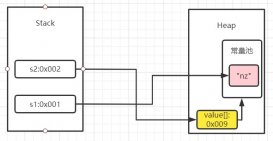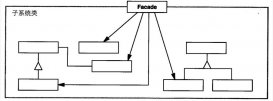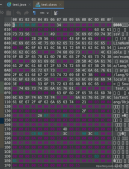本文实例为大家分享了Java执行SQL脚本文件到数据库的具体方式,供大家参考,具体内容如下
方式一:直接读取SQL脚本文件的内容,然后传递到SQL中。
代码:RunSqlService:
|
1
2
3
4
5
6
7
8
9
10
11
12
13
14
15
16
17
18
19
20
21
22
23
24
25
26
27
28
29
30
31
32
33
34
35
36
37
38
39
40
41
42
43
44
45
46
47
48
49
50
51
52
53
54
55
|
@Autowiredprivate RunSqlDao runSqlDao;/** * 读取文件内容到SQL中执行 * @param sqlPath SQL文件的路径:如:D:/TestProject/web/sql/脚本.Sql */public void runSqlByReadFileContent(String sqlPath) throws Exception { try { String sqlStr = readFileByLines(sqlPath); // System.out.println("获得的文本:" + sqlStr); if (sqlStr.length() > 0) { runSqlDao.runSqlBySqlStr(sqlStr); } } catch (Exception e) { e.printStackTrace(); throw e; }}/** * 以行为单位读取文件,常用于读面向行的格式化文件 */private String readFileByLines(String filePath) throws Exception { StringBuffer str = new StringBuffer(); BufferedReader reader = null; try { reader = new BufferedReader(new InputStreamReader( new FileInputStream(filePath), "UTF-8")); String tempString = null; int line = 1; // 一次读入一行,直到读入null为文件结束 while ((tempString = reader.readLine()) != null) { // 显示行号 // System.out.println("line " + line + ": " + tempString); str = str.append(" " + tempString); line++; } reader.close(); } catch (IOException e) { e.printStackTrace(); throw e; } finally { if (reader != null) { try { reader.close(); } catch (IOException e1) { } } } return str.toString();} |
RunSqlDao :
|
1
2
3
4
5
6
7
8
|
/** * @param sqlStr */public void runSqlBySqlStr(String sqlStr) { Map<String,Object> map=new HashMap<String,Object>(); map.put("sqlStr", sqlStr); sqlSessionTemplate.selectList("runSql.runSqlBySqlStr", map);} |
SQLMap:
|
1
2
3
4
5
6
7
|
<mapper namespace="runSql"><select id="runSqlBySqlStr" parameterType="map"><![CDATA[ ${sqlStr}]]></select></mapper> |
这种写法:只支持数据的变化(新增、修改、删除),且SQL文件内容以begin开始,以end结束。无法更新表字段修改等操作。
方式二;使用ScriptRunner
代码:RunSqlService:
|
1
2
3
4
5
6
7
8
9
10
11
12
13
14
15
16
17
|
/** * 执行sql脚本文件 使用ScriptRunner * @param sqlPath SQL文件的路径:如:D:/TestProject/web/sql/脚本.Sql */public void runSqlByScriptRunner(String sqlPath) throws Exception { try { SqlSession sqlSession = sqlSessionFactory.openSession(); Connection conn = sqlSession.getConnection(); ScriptRunner runner = new ScriptRunner(conn); runner.setEscapeProcessing(false); runner.setSendFullScript(true); runner.runScript(new InputStreamReader(new FileInputStream(sqlPath), "UTF-8")); } catch (Exception e) { e.printStackTrace(); throw e; }} |
这种写法:只能有一行SQL,即一次执行一个SQL语句,否则就会报错。
方式三:使用ScriptUtils
代码:RunSqlService:(以下两种方式:脚本.Sql 和RunSqlService 在同一目录下)
方法(1)
|
1
2
3
4
5
6
7
8
9
10
11
12
13
14
|
/** * 执行sql脚本文件 使用Spring工具类 */public void runSqlBySpringUtils() throws Exception { try { SqlSession sqlSession = sqlSessionFactory.openSession(); Connection conn = sqlSession.getConnection(); ClassPathResource rc = new ClassPathResource("脚本.Sql", RunSqlDao.class); ScriptUtils.executeSqlScript(conn, rc); } catch (Exception e) { e.printStackTrace(); throw e; }} |
方法(2)
|
1
2
3
4
5
6
7
8
9
10
11
12
13
14
15
|
/** * 执行sql脚本文件 使用Spring工具类 */public void runSqlBySpringUtils() throws Exception { try { SqlSession sqlSession = sqlSessionFactory.openSession(); Connection conn = sqlSession.getConnection(); ClassPathResource rc = new ClassPathResource("脚本.Sql", RunSqlDao.class); EncodedResource er = new EncodedResource(rc, "utf-8"); ScriptUtils.executeSqlScript(conn, er); } catch (Exception e) { e.printStackTrace(); throw e; }} |
方法(1),脚本.Sql文件必须是ANSI的,否则执行到数据中汉字是乱码。
方法(2)解决了方法(1)的问题,完美了,喜欢的小伙伴们快拿去享用吧。
以上就是本文的全部内容,希望对大家的学习有所帮助,也希望大家多多支持服务器之家。

















